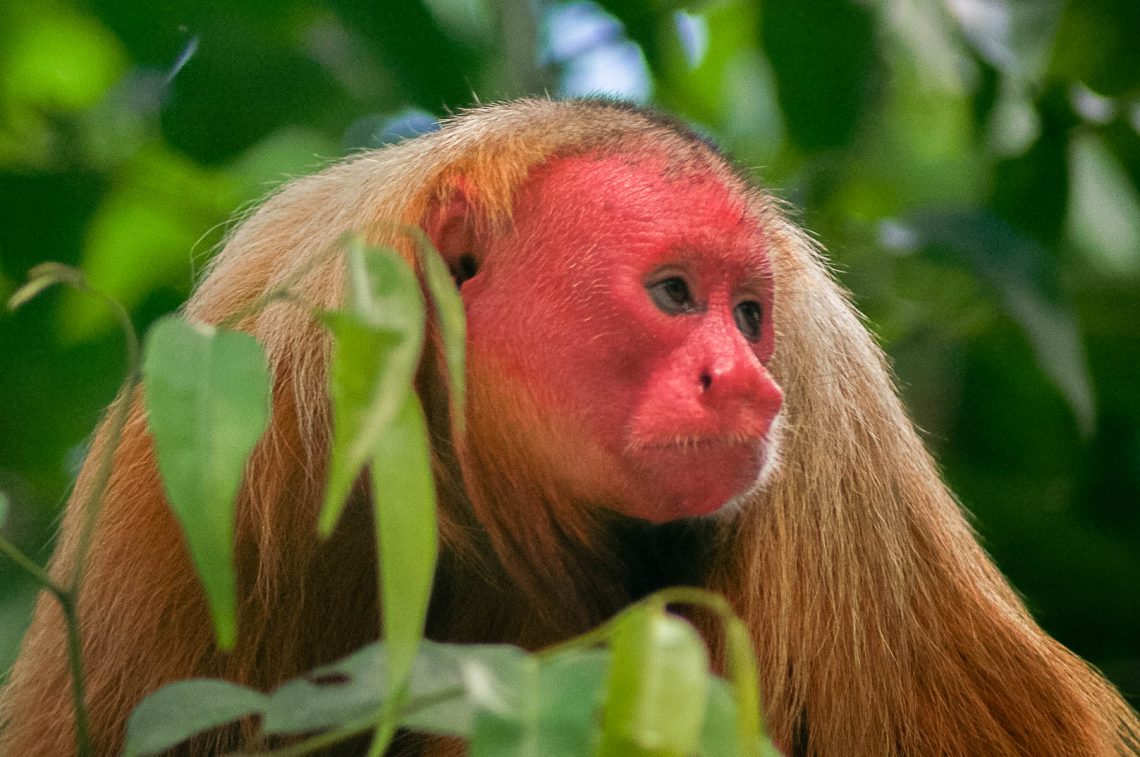
photo by Kevin O’Connell (CC BY 2.0)
If the uakari (wah-KAHR-ee) of the Amazon river basin were human, you’d hesitate to swipe right. Both sexes come with a seriously receding hairline and a body type best described as “frumpy muppet.” To top it off, their faces are…. Red. Really, really red.
They look like a Minnesota frat boy on his third day in Cancun. And they don’t care what you think of them.
Among the four sub-species of bald uakari, that sun-broiled complexion isn’t a sign someone forgot their sunscreen – it’s an honest signal to others that you are a sexy monkey.
That’s because the color of an individual’s face is actually a direct window into their health.
…How?
As it turns out, bald uakari’s facial skin isn’t red at all – it’s transparent. A recent study has shown that their facial epidermis is thinner than usual and completely devoid of pigment. Most animals have some kind of pigment that lends color to their skin (yes, even Tilda Swinton). Skin pigment not only blocks ultraviolet rays from damaging cells, it also helps animals camouflage and communicate.
In the uakari’s case, their lack of skin color is the key to communication, because it allows other individuals to see directly into the dense network of large capillaries under the skin. Uakari can tell just from looking at a potential mate’s face whether they’re healthy and fertile.
Why is this a thing?

click for video courtesy of arkive.org
We don’t have enough research yet to be sure why the uakari developed this anatomical answer to the radical honesty movement, but there are two strong contenders (both of which may play a role).
You can tell a lot about someone’s general health from their blood, and blood parasites are rampant in the Amazon rainforest. Uakari who are sick with malaria or Chagas disease become notably pale in the face (see right). That peachy complexion would be a big…un-red flag for potential mates. While most uakari contract a blood parasite at some point, any visible symptoms mean your immune system sucks at battling them back.

photo by Aaron Martin (CC BY 2.0)
The color of a uakari’s face doesn’t just help with the “who,” it may also signal the “when.” Like a few other species of primate, including mandrills and Japanese macaques, facial redness indicates fertility. These species develop estrogen receptors in their face during puberty.
When females are on the verge of ovulation, the sharp increase in estrogen binds with those receptors and causes increased blood flow in their face. And since the body converts testosterone into estrogen, males with higher levels of testosterone also experience a redder face. Bow-chicka-bow-bow!
If you’re thirsty for more uakari knowledge, you can learn all about their weird little lives, courtesy of the National Primate Research Center.
References
Mayor, P., Mamani, J., Montes, D., González-Crespo, C., Sebastián, M. A., & Bowler, M. (2015). Proximate causes of the red face of the bald uakari monkey (Cacajao calvus). Royal Society Open Science, 2(7), 150145. Available at: http://rsos.royalsocietypublishing.org/content/2/7/150145
